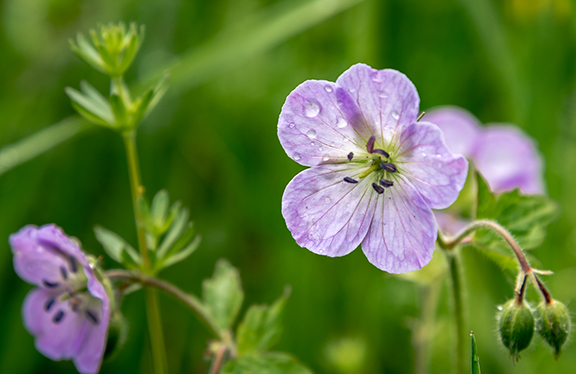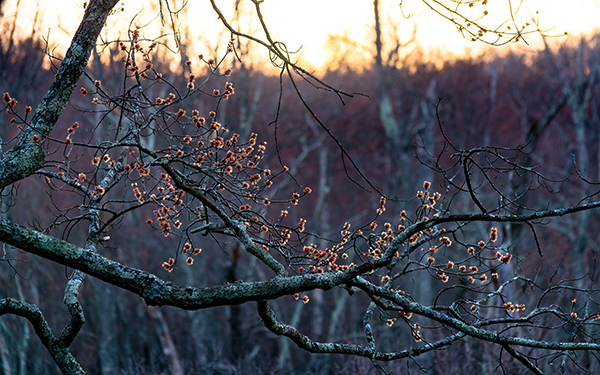Wetlands are among the most important and most biologically productive natural ecosystems, and the Great Swamp reflects that richness. Thirty-one distinct plant and natural communities have been documented including flood plain forest, fens, and shrub swamps.
The bedrock under the Swamp consists mostly of limestone and marble rather than the schist and gneiss that is the foundation layer of most of Putnam County. The Swamp, therefore, is lower in acidity, which influences the types of plants and trees that are found in The Swamp.
The Red Maple Swamp Forest in the Patterson section of the Great Swamp encompasses 1,858 acres, and is the largest red maple hardwood forest in New York State. Red Maples dominate, of course, but the understory vegetation is often dense. Shrubs such as Silky Dogwood, Spicebush and Sweet Pepperbush abound. Skunk cabbage carpets the ground level.
This section of the Swamp is the most important area for breeding binds. A least 90 species of birds breed within the Swamp. Many of these are area sensitive. They are affected by the width of the forest corridor. They need wide areas of undisturbed forest to breed successfully. Areas at least 500 meters wide are preferred. If forested areas are narrow, these birds can not successfully raise young due to predation from other more aggressive birds like jays, crows and cowbirds or from raccoons feral cats. These predators are usually found in areas adjacent to the swamp but do not venture too far within it.
This section of Swamp is home to many other creatures as well. Mammals found here include the river otter, beaver, opossum, mink and fisher. Wood frogs and other amphibians thrive here as wells as over 58 species of dragonflies and damselflies.

Wet meadows are among the rarest of wetland habitats. In the Great Swamp the wet meadow habitat is found in a few scattered areas. These meadows provide homes for many species that are not to be found in other areas of the Swamp, adding to its biodiversity.
During the winter and early spring, these meadow habitats are frequently covered with water. Some sections along the East Branch Croton River flood annually during the spring snow melt. The waters recede in late May and the grasses reappear. The soils remain saturated just below the surface. Upon closer examination the “grasses” are not really grasses at all but sedges mixed with rushes and, often, sensitive ferns.
Wildflowers that are also adapted to the cycle of wet and dry– like the swamp milkweed, marsh bellflower, golden ragwort, blue flag—are abundant here.

Plants Provide an Important Source of Food
The plants of the Swamp provide year round food for the wildlife of the Swamp. Even in the cold weather of winter, plant material is a critical food source. Many of the songbirds that stay north in the winter congregate in the Swamp. In the wet meadows and the shrub swamp areas they can find many plants with winter seeds as well as shrubs with berries that remain most of the winter. Wetland shrubs like Black Alder provide seeds. Vines of wild grape and bittersweet provide berries, although the grapes are all usually eaten early in the season.
A plant that humans scorn because of the itchy rash it may give us when we unintentionally brush against its leaves, provides an excellent source of berries for wintering birds. The poison ivy is one of the best berry providers for wintering birds.

